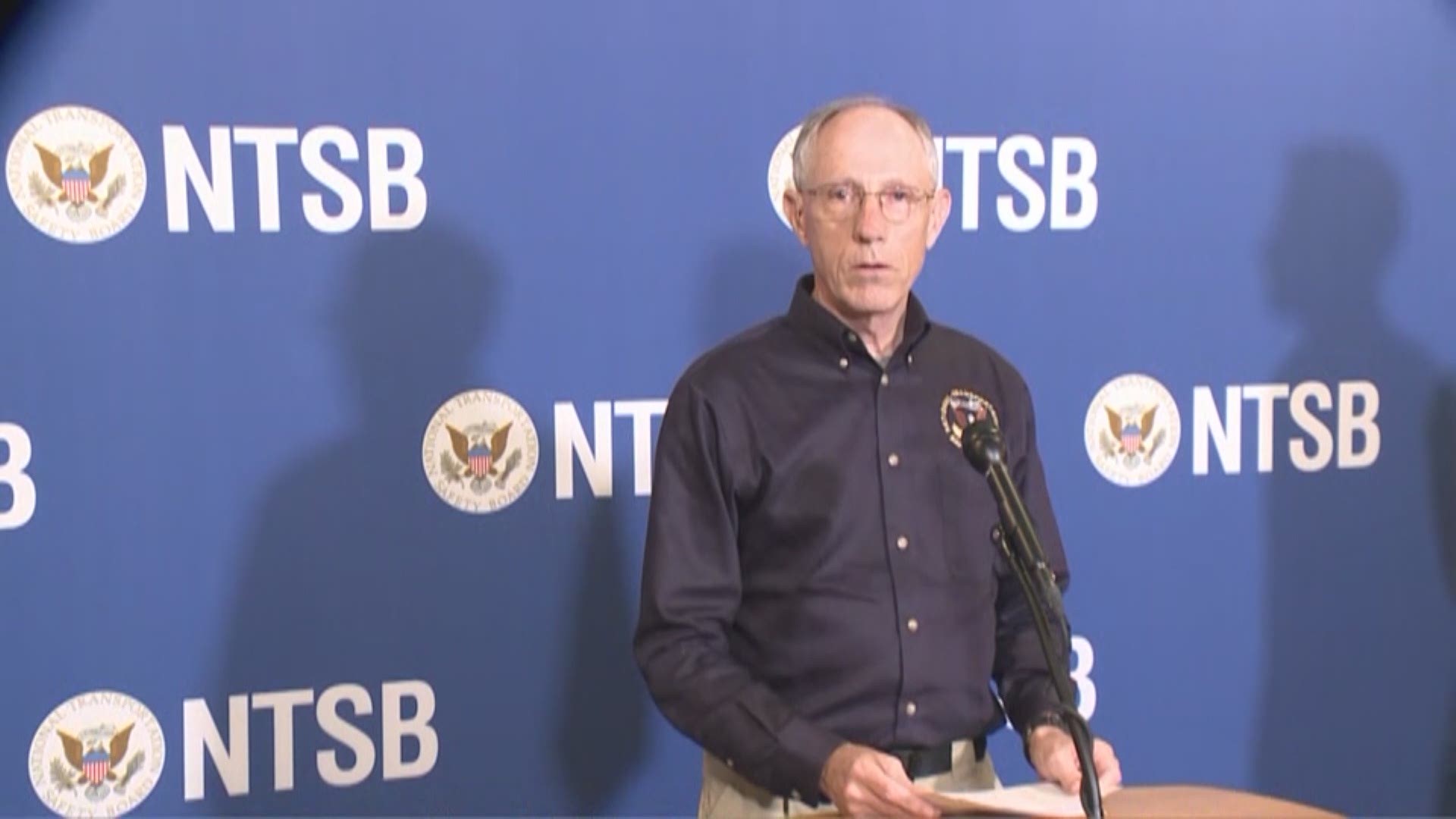Divers from the United States Navy were sent to recover pets from a Boeing 737-800 that skidded off a runway at NAS Jax and into the St. Johns River, where it remains, according to the National Transportation Safety Board during a news conference on Sunday.
The plane's cockpit voice recorder remains underwater in the tail of the aircraft, says NTSB Vice Chairman Bruce Landsberg.
To aid recovery efforts, the board says the plane must be de-fueled so divers can get to the underside. Around 1,200 gallons of fuel remain aboard the plane and holes must be cut at the top of the plane to remove the fuel, Landsberg said.
Landsberg also announced during the conference the parties investigating the incident.
Parties include Miami Air International, the FAA, Boeing, the pilot union Teamsters, the flight attendants union, the Navy and the manufacturer of the plane's engine.
Landsberg said the speed of the Miami Air International plane was 187 mph at touchdown with a ground speed of 205 mph, which is faster than the desired speed for a 737.
The plane's left thrust reverser wasn't working, which was noted in the plane's maintenance log, according to the NTSB. The thrust reverser is considered the most critical, desirable and effective means to slow a plane after touchdown.
At the time, gear on the runway was shortened in length from 9000 feet to 7800 feet. Investigators are looking to see if the change in length had anything to do with the plane leaving the runway, according to Landsberg.
As an investigation in the wreck continues, NTSB Investigator John Lovell said the board is looking into the training, experience and fatigue of the crew at the time of the incident.
NTSB is also looking for video from witnesses at the scene.
The aircraft was carrying 143 people when it skidded off the runway around 9:40 p.m. on Friday.


